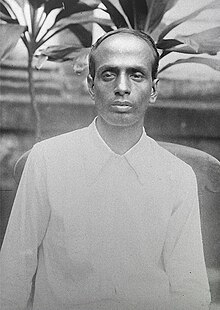Chittagong Armoury Raid
| Chittagong armoury raid | |||||
|---|---|---|---|---|---|
 Surya Sen, leader of the raid |
|||||
|
|||||
| Commanders and leaders | |||||
| Surya Sen | |||||
The Chittagong Armoury Raid, also known as Chittagong uprising, was an attempt on 18 April 1930 to raid the armoury of police and auxiliary forces from the Chittagong armoury in the Bengal Presidency of British India (now in Bangladesh) by armed Indian independence fighters led by Surya Sen.
The raiders were members of revolutionary groups who favoured armed uprisings as a means to achieve India's independence from British colonial rule. They were inspired by the 1916 Easter Rising in Ireland and led by Surya Sen. The group included Ganesh Ghosh, Lokenath Bal, Ambika Chakrobarty, Harigopal Bal (Tegra), Ananta Singh, Anand Prasad Gupta, Pritilata Waddedar, Kalpana Dutta, Binod Bihari Chowdhury, Subodh Roy, Debi Prasad Gupta and many others.
Sen devised a plan to capture the two main armouries in Chittagong, destroy the telegraph and telephone office, and take as hostages members of the "European Club", the majority of whom were government or military officials involved in maintaining the British Raj in India. Firearms retailers were also to be raided, while rail and communication lines were to be cut in order to sever Chittagong from Calcutta. Imperial banks at Chittagong were to be looted to gather money for further uprisings, and various jailed revolutionaries would be freed.
The plan was put into action at 10 p.m. on 18 April 1930. The police armoury (in Police Line in Dampara) was captured by a group of revolutionaries led by Ganesh Ghosh, while another group of ten men led by Lokenath Bal took the Auxiliary Forces armoury (now the old Circuit House). Some 65 people took part in the raid, undertaken in the name of the Hindustan Republican Army, Chittagong Branch. They failed to locate ammunition but did succeed in cutting telephone and telegraph wires and disrupting train movements.
...
Wikipedia
